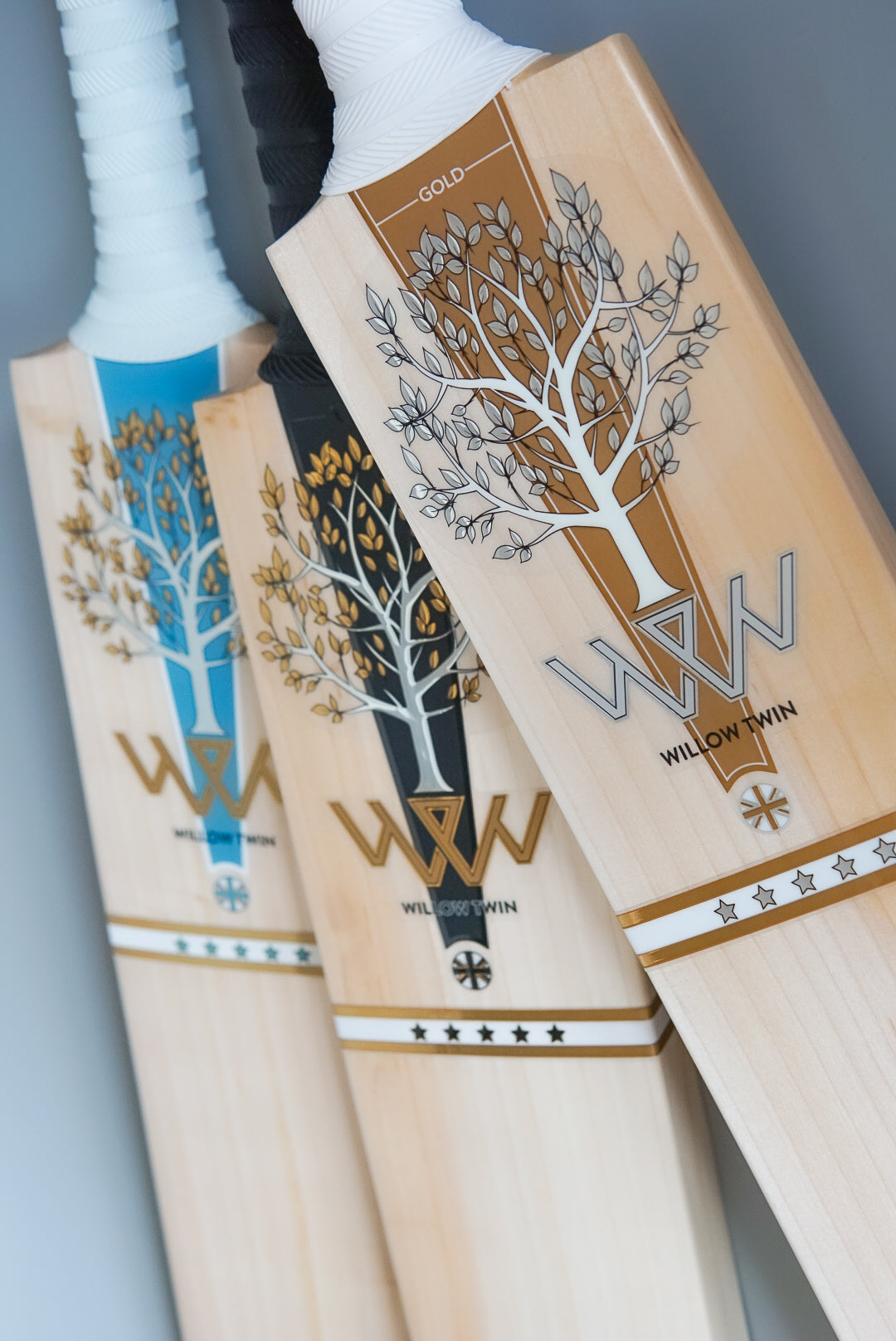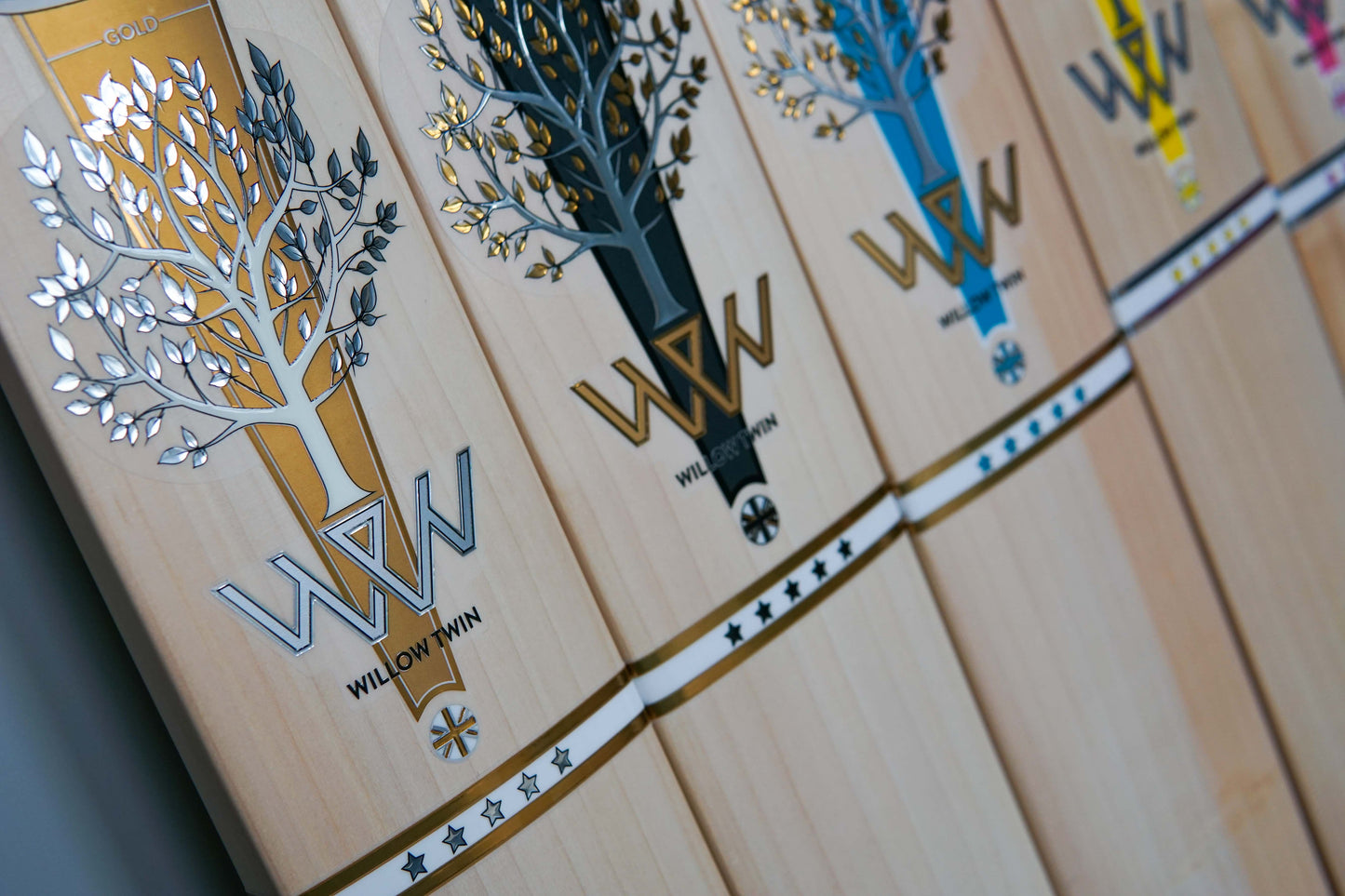Understanding your cricket bat
Prior to receiving your Willow Twin cricket bat it will go through a pressing process during production which enhances its power and provides some conditioning. Our experience pressing cricket bats involves a careful assessment of each cleft to determine the necessary pressure. This custom press optimises the drive area and increases the durability for each piece of willow.
However, we still recommend thoroughly knocking in your cricket bat on receiving it, as well as storing it appropriately and caring for it over multiple seasons. Whether you're a seasoned professional or just starting out, it's important to take good care of your cricket bat to ensure it lasts for as long as possible. In this blog post, we'll go through some tips on how to look after and maintain your cricket bat.
Knocking In
Before you start using your cricket bat in a game, it's important to knock it in. Knocking in is the process of compressing the fibres of the willow wood to make the bat stronger and more durable. This helps to strengthen the bat and reduce the risk of it cracking or splitting when you start playing with it.
To knock in your cricket bat, use a wooden mallet to gently tap the face and edges of the bat. Start with the edges, gradually moving to the face, and aim to hit every inch of the bat. Be sure to use a light touch at first, gradually increasing the force as you go. This process can take several hours, but it's well worth the effort to ensure your bat lasts longer.
After knocking in you can progress to hitting short catches with an aged, but good quality cricket ball. If seam marks start appearing on the bat face, you should return to the knocking in phase for further conditioning.
The bat is now ready to use in the nets with an old soft cricket ball. You should play in a defensive manner and try to avoid very fast bowling. Again, if the seam of the ball starts denting the blade, then you should resume the knocking in process.
Oiling
Another important aspect of cricket bat maintenance is oiling. Oiling helps to keep the wood of the bat supple and prevent it from drying out and cracking. It also helps to repel moisture, which can cause the bat to warp.To oil your cricket bat, use a clean cloth to apply a thin layer of linseed oil to the face and edges of the bat. Let it soak in for several hours, then wipe off any excess with a dry cloth. Lay the bat flat when oiling, and try not to over oil.
If you are oiling your cricket bat prior to applying stickers, then leave it to dry completely for at least 2 weeks. This will ensure the stickers will attach properly to the wood and not simply slide off.
Adding a Scuff Sheet and Toe Guard
To further protect your cricket bat from damage, you can add a scuff sheet and toe guard. A scuff sheet is a thin, protective layer that is applied to the face of the bat to prevent it from becoming damaged during play. A toe guard is a strip of rubber that is added to the bottom of the bat to prevent it from becoming damaged when hitting the ground. To apply a scuff sheet, simply peel off the backing and carefully stick it to the face of the bat. For a toe guard, use a strong adhesive to attach it to the bottom of the bat.
Storage
When you're not using your cricket bat, it's important to store it properly. Keep it in a dry, cool place, away from direct sunlight and damp conditions.Don't lean it against a wall with the handle facing upwards. This can put pressure on the splice (the join between the handle and the blade) and cause it to weaken.
If you have more than one bat, don't stack them on top of each other as this can cause damage. Consider using a bat cover to protect the willow when it’s not in use, and when you are transporting it. This is particularly useful when the bat is stored in your cricket bag, when it can easily dent when coming into contact with a batting helmet or cricket boots.
Refurbishment
If your cricket bat starts to show signs of wear and tear, it may be time for a refurbishment. This involves sanding down the face of the bat to remove any dents or scratches, as well as repairing any major or minor damage. At Willow Twin, we offer a refurbishment service that can help to bring your cricket bat back to life. Our team of experts will carefully assess your bat, carry out any necessary repairs, and get it back to top condition. So if you want to keep your cricket bat in the best possible condition, consider using our refurbishment service.




